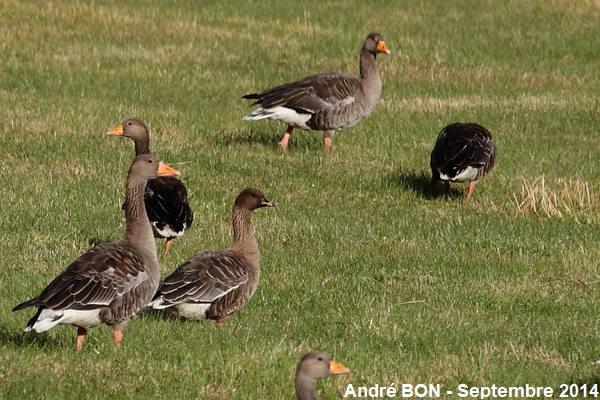
| Pink-footed Goose (Anser brachyrhynchus (Baillon, 1834)) |

|
|
Scientific name: Anser brachyrhynchus (Baillon, 1834) Common name: Pink-footed Goose French name: Oie à bec court Order: Anseriformes Family: Anatidae Size: Body size: 60 to 75 cm; Weight: 1800 to 3400 g; Wingspan: 135 to 170 cm. Habitat: Arctic tundra. Food: The Pink-footed Goose is vegetarian. It feeds on terrestrial and water plants, including roots, tubercles and seeds. It also feeds in cultivated areas. Nesting: The nest is built on the ground in a small depression. It is lined with moss and down. Females lay 4 to 5 eggs in May-June. Migration: In winter Pink-footed Gooses migrate to Great-Britain, the Netherlands, Belgium and Denmark. Geographic area: East of Greenland, Iceland and Svalbard. |
The Pink-footed Goose has a dark brown head and upper side of the neck. The under side of the neck and the chest are a lighter brown colour. The upper side of the body is pale greyish brown. The rump and the tip of the tail are white. The bill is pink with some black colour at the base and at the tip. The legs are pink. The most similar species is the Bean Goose (Anser fabalis). This species is a slightly larger size and it shows a longer neck. The bill and the legs are orange coloured. |
| [To know more about the Pink-footed Goose] [Top] |

|
We stopped on the road side to observe this large flock of Greylag Gooses. Later, looking at my pictures, I saw that they were accompanied by one Pink-footed Goose. The displayed picture is then an important crop. The smaller size, the darker head and the colour of the bill are enough to confirm the identification of the species. |